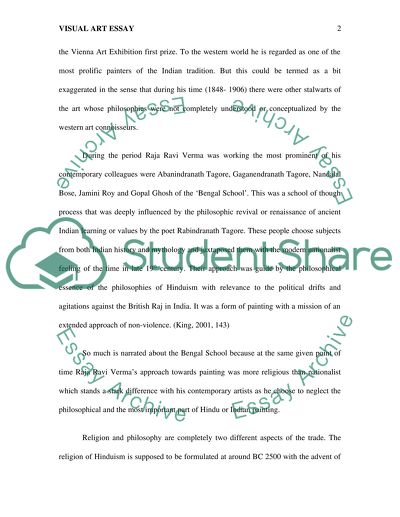Cite this document
(“Critical Art Theory Of Raja Ravi Varmas Essay Example | Topics and Well Written Essays - 1500 words”, n.d.)
Critical Art Theory Of Raja Ravi Varmas Essay Example | Topics and Well Written Essays - 1500 words. Retrieved from https://studentshare.org/visual-arts-film-studies/1521684-critical-art-theory-essay-of-raja-ravi-varmas-art
Critical Art Theory Of Raja Ravi Varmas Essay Example | Topics and Well Written Essays - 1500 words. Retrieved from https://studentshare.org/visual-arts-film-studies/1521684-critical-art-theory-essay-of-raja-ravi-varmas-art
(Critical Art Theory Of Raja Ravi Varmas Essay Example | Topics and Well Written Essays - 1500 Words)
Critical Art Theory Of Raja Ravi Varmas Essay Example | Topics and Well Written Essays - 1500 Words. https://studentshare.org/visual-arts-film-studies/1521684-critical-art-theory-essay-of-raja-ravi-varmas-art.
Critical Art Theory Of Raja Ravi Varmas Essay Example | Topics and Well Written Essays - 1500 Words. https://studentshare.org/visual-arts-film-studies/1521684-critical-art-theory-essay-of-raja-ravi-varmas-art.
“Critical Art Theory Of Raja Ravi Varmas Essay Example | Topics and Well Written Essays - 1500 Words”, n.d. https://studentshare.org/visual-arts-film-studies/1521684-critical-art-theory-essay-of-raja-ravi-varmas-art.


